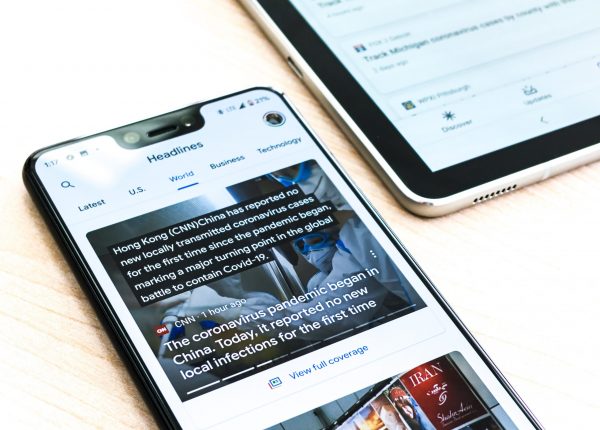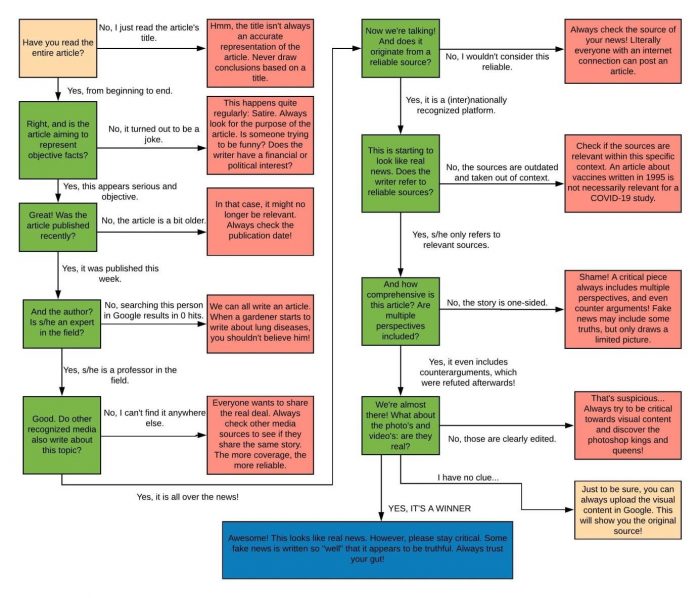

Drink water. Preferably warm water; the coronavirus does not like heat. Eat a clove of garlic a day, this will prevent you from catching the virus. And whatever you do, do NOT use ibuprofen. This will make COVID-19 symptoms even worse. These three corona advices have one major thing in common. They’re all false. Fortunately, they’re still relatively harmless, but some messages can pose serious dangers to your health. Viral WhatsApp messages have called for snorting cocaine to mitigate the virus, and in the United States people have died after drinking bleach to cure corona.
Since the outbreak of the coronavirus, fake news and disinformation seem to dominate the information sphere. The WHO even recognizes a second pandemic: an ‘infodemic’. An (incorrect) information overload that is being spread via social media platforms such as Facebook, Instagram, WhatsApp and YouTube. Platforms that are especially popular amongst young people. Luckily, tech giants such as Facebook, YouTube and Google are fighting back to somewhat waken the effects of harmful disinformation: government information is prioritized over individual messages on these platforms.
But this is not enough. We need to be more ambitious; we need to make young people resilient to disinformation. Stimulate them to think critically. Make them aware of the negative effects of fake news. Reach out to them to talk about these topics and broaden their worldview. This is crucial, as young people are especially susceptible to disinformation and polarizing messages. Why is that? First off, young people are more frequently exposed to disinformation via social media platforms, such as Instagram, TikTok and Twitter. At the same time, young people do not always recognize themselves in traditional media. They feel insufficiently represented. The news, the themes that are discussed, don’t match their worldview. This can greatly impact them in building important democratic values, such as freedom of speech.
Student after taking part in Under Pressure: “I never actually watched the news, because I didn’t trust the media. To get a reliable understanding of the world around me, I will now try to read multiple news sites.”
Under Pressure, an initiative of Diversion and DROG, and part of PEGAP (Peer Education and Gamification Against Polarisation), starts the conversation about these themes. With our PEGAP partners; Fryshuset, AEGEE and The Schwarzkopf Foundation, it is our goal to spread Under Pressure throughout Europe by 2021. With the support of the European Commission Erasmus+ funding program, Fonds 21 and the municipality of Rotterdam, we enter classrooms with our young role models so we can start the dialogue with students. The objective is to increase students’ resistance against disinformation, and to strengthen their understanding of democratic citizenship, freedom of speech and freedom of press. Now that our role models temporarily cannot physically teach in classrooms – while media literacy might be more important than ever – we are developing new ways to teach Under Pressure, so that the program can adapt to the changes within education. The digitalization of our materials is in full swing. Are you interested in the results? Let us know!
Teacher: “The starting point in these lessons are the students themselves and their own potential to come up with ideas and solutions. This makes the program very effective.”
We challenge everyone to remain vigilant, and not take every news message you recieve at face value. Especially now, since we’re all spending more time online, a critical eye is indispensable. Therefore, we gladly share our plan of action below. It consists of a few simple steps to increase your ability to spot disinformation, stop the spread and start a conversation with others.

Disclaimer: If you’ve been sent medical advice via social media apps that you’re unsure of, check the WHO COVID-19 mythbusters page or consult your GP.
Author: Emma van Toorn
